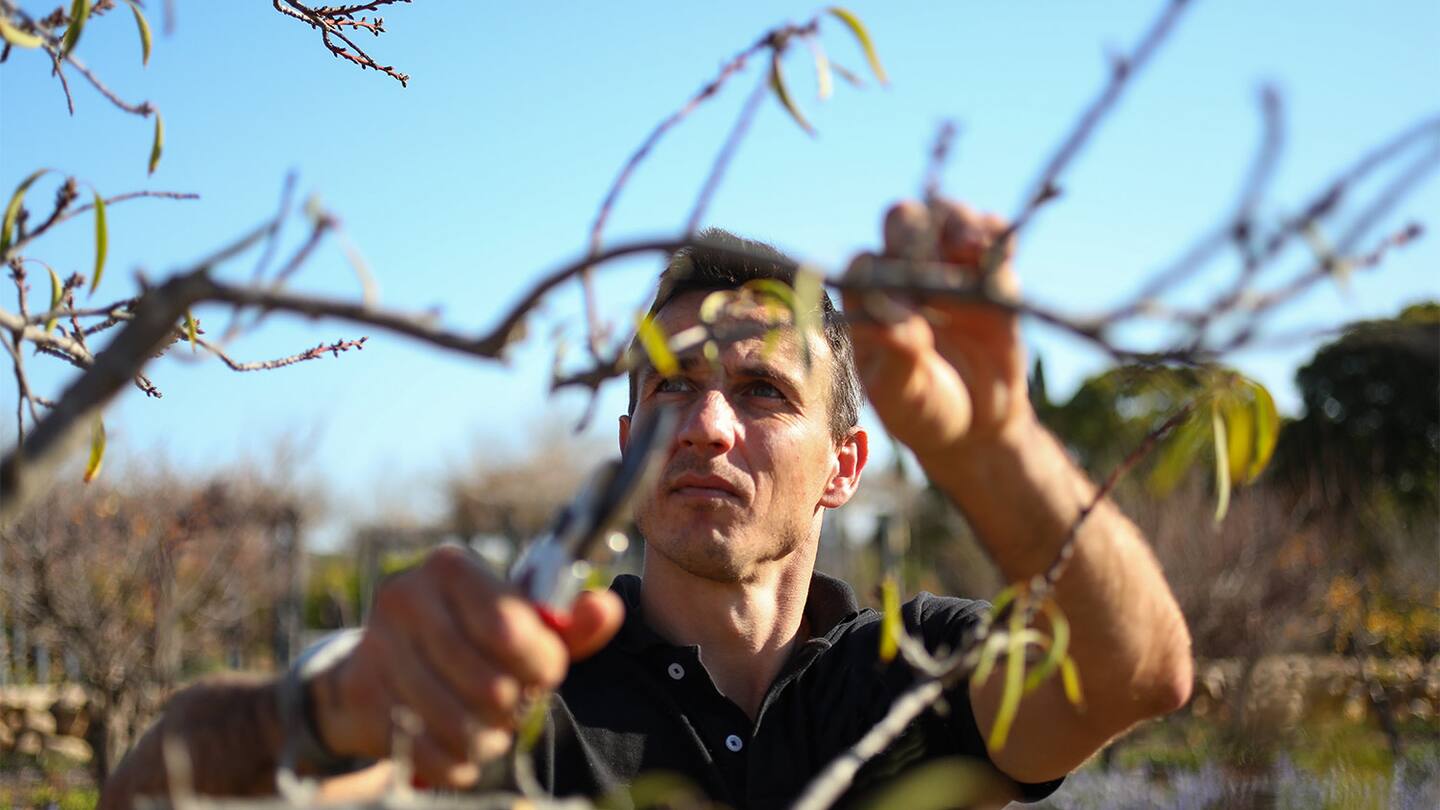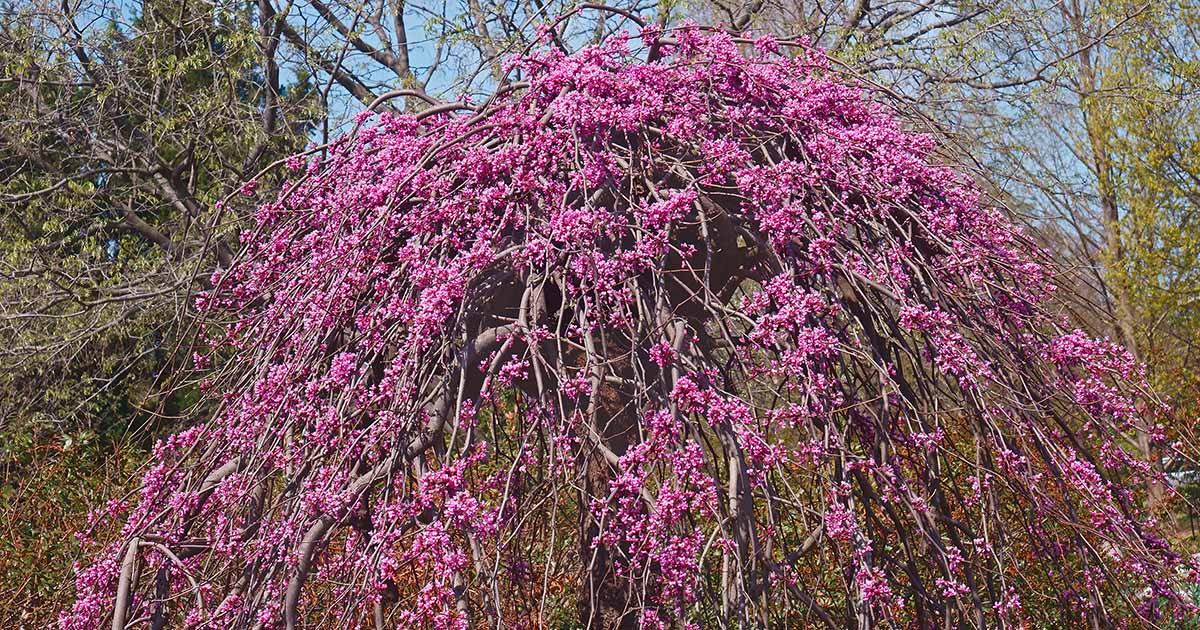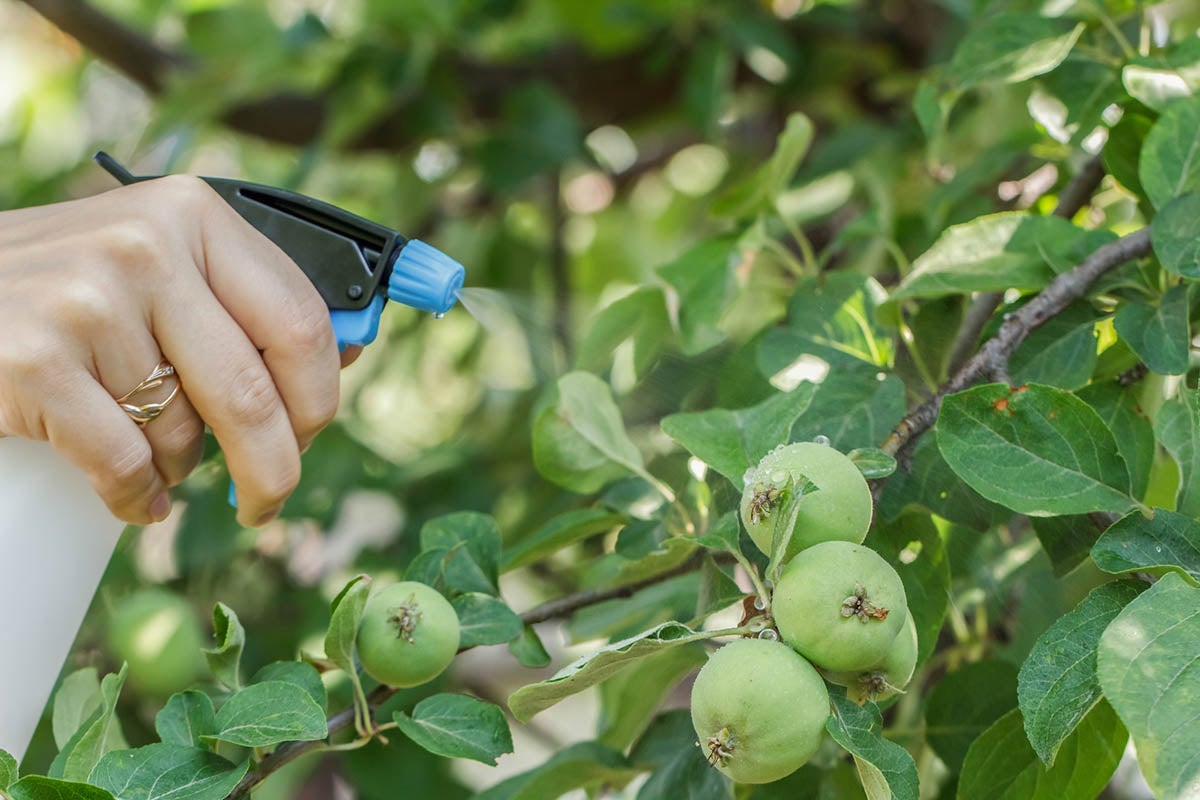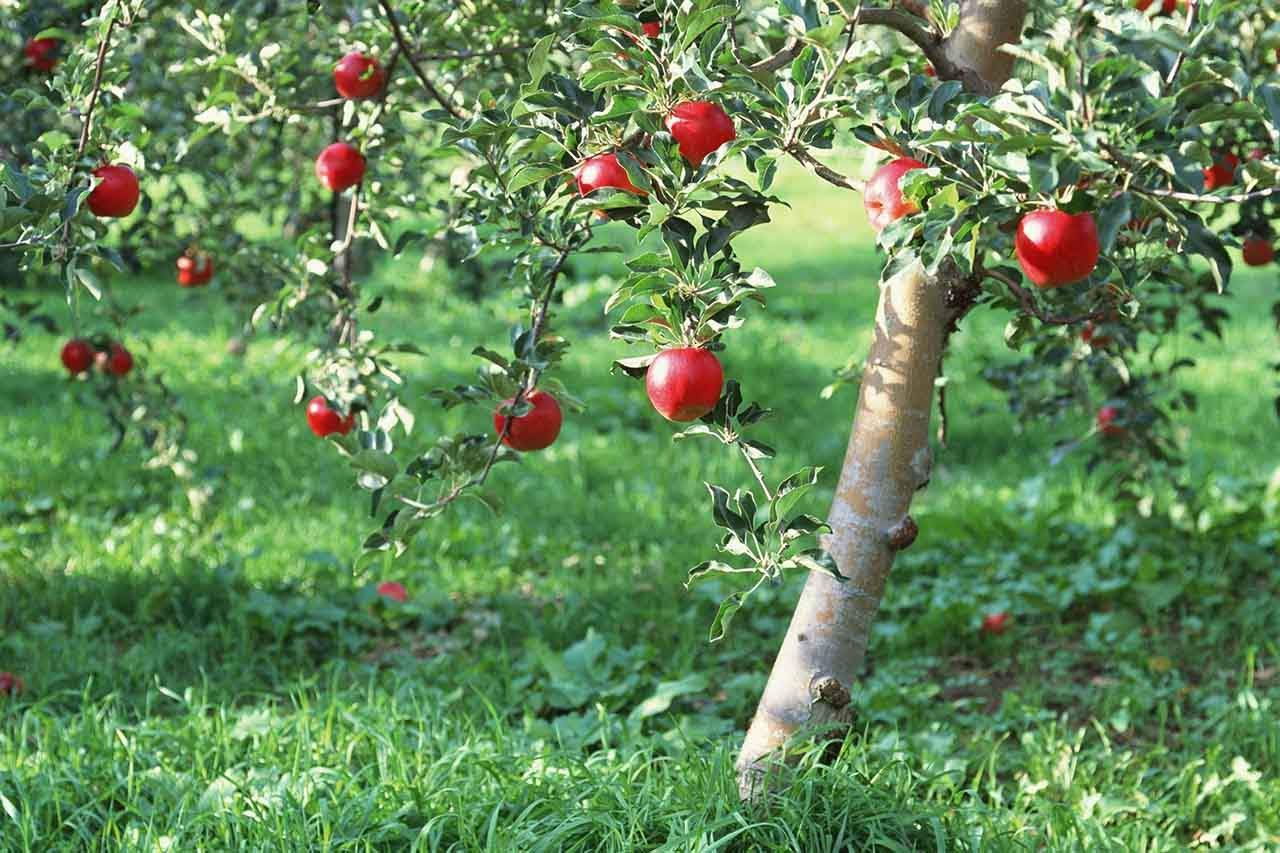Home>Gardening Techniques>Plant Care>When Do You Trim Apple Trees
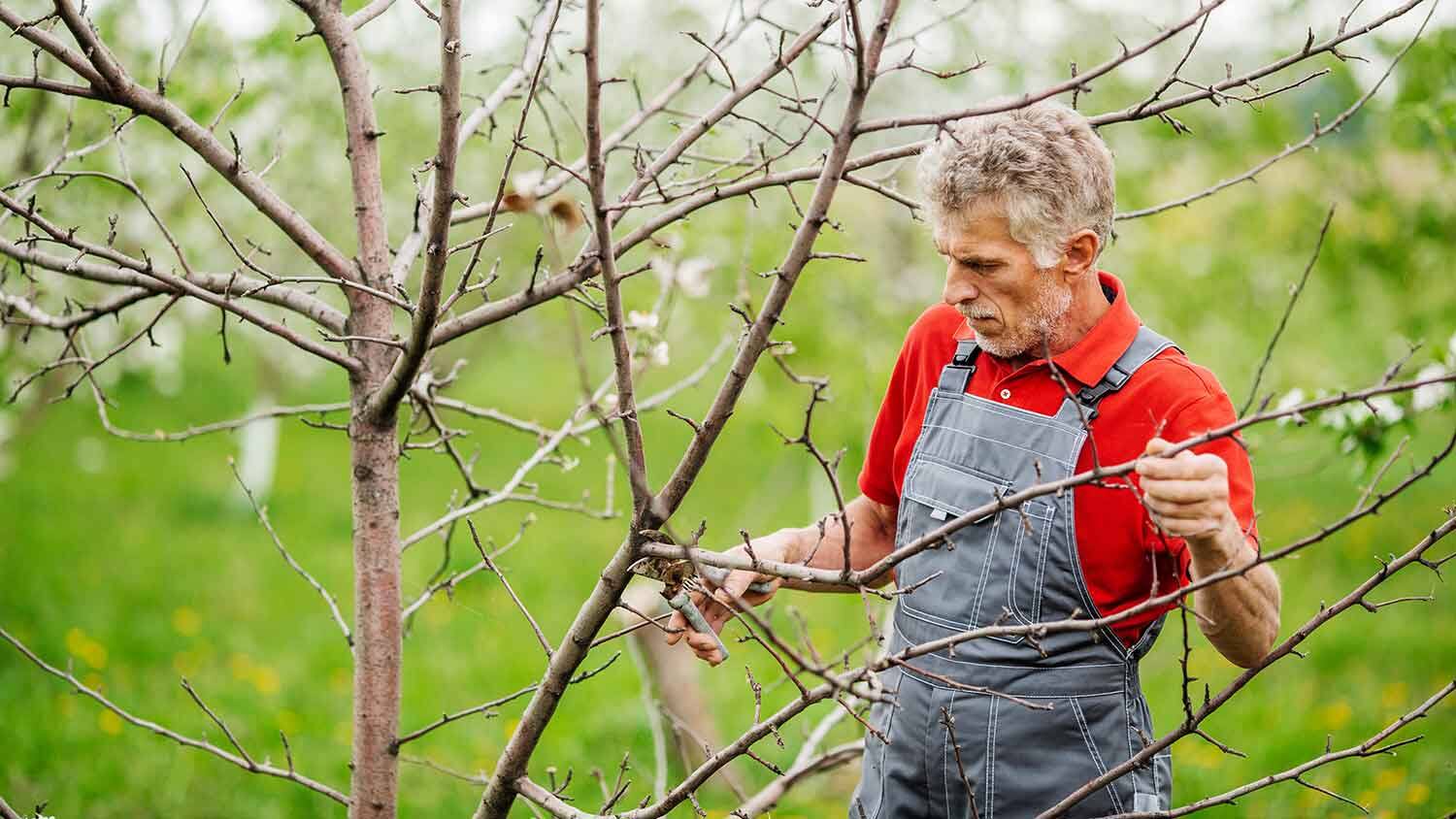

Plant Care
When Do You Trim Apple Trees
Modified: January 22, 2024
Learn the best time to trim apple trees and other essential plant care tips to ensure healthy growth and abundant fruit production.
(Many of the links in this article redirect to a specific reviewed product. Your purchase of these products through affiliate links helps to generate commission for Chicagolandgardening.com, at no extra cost. Learn more)
Table of Contents
Introduction
Welcome to the world of apple tree care! Whether you have a small orchard or a single apple tree in your backyard, knowing how to properly trim and prune your apple trees is essential for their health and productivity. Pruning apple trees not only helps to maintain their shape and size, but it also promotes better air circulation, sunlight penetration, and overall growth.
In this article, we will explore the art of pruning apple trees and answer the burning question, “When do you trim apple trees?” We will dive into the benefits of pruning, the factors to consider before getting started, and the best time to trim your apple trees. We will also provide you with a step-by-step guide, common mistakes to avoid, and a list of the tools and equipment you will need.
So, whether you are a seasoned gardener or a novice with a green thumb, let’s embark on this journey together and discover the secrets to successful apple tree pruning!
Benefits of Pruning Apple Trees
Pruning your apple trees offers a multitude of benefits that go beyond just shaping their appearance. Let’s explore some of the key advantages of pruning:
1. Improved Air Circulation: One of the primary benefits of pruning apple trees is that it enhances air circulation within the canopy. By removing overcrowded and overlapping branches, you create space for air to flow more freely. This, in turn, reduces the likelihood of fungal diseases and allows for better nutrient uptake.
2. Increased Sunlight Penetration: Pruning helps create an open canopy, allowing more sunlight to reach the lower branches and fruit. Sunlight is essential for photosynthesis, the process by which plants convert sunlight into energy. Adequate sunlight exposure leads to healthier fruit development and increased sugar content.
3. Enhanced Fruit Quality and Size: When you trim apple trees, you redirect the tree’s energy towards fewer, high-quality fruits. By removing excess branches and thinning out the canopy, each remaining fruit receives more nutrients and water. This results in larger, tastier, and more vibrant apples.
4. Prevention of Disease and Pest Infestation: Pruning helps create a healthier environment for your apple trees. By removing dead, diseased, or damaged branches, you eliminate potential hiding places for pests and prevent the spread of diseases. Additionally, pruning improves the overall vigor of the tree, making it more resistant to diseases and pests.
5. Shape and Structure Control: Regular pruning allows you to shape and control the structure of your apple trees. By removing any crossing or competing branches, you create a strong central leader and well-spaced lateral branches. This promotes a balanced structure, making it easier for the tree to support heavy fruit loads and withstand strong winds.
6. Renewal and Rejuvenation: Over time, certain branches on your apple trees may become unproductive or overly vigorous. Pruning allows you to remove these older branches, stimulating new growth and encouraging rejuvenation. This helps maintain the overall health and productivity of your apple trees.
Remember, pruning is a delicate process, and it is important to follow proper techniques and timing to maximize the benefits and minimize any potential risks. Now that we’ve explored the advantages of pruning, let’s move on to the factors to consider before pruning your apple trees.
Factors to Consider Before Pruning
Before you grab your pruning shears and start cutting away, there are a few important factors to consider. These factors will help you determine the best approach for pruning your apple trees:
1. Tree Age and Health: The age and health of your apple tree play a significant role in determining the pruning intensity. Younger trees require less pruning, focusing mainly on shaping and training the structure, while older trees may need more extensive pruning to remove dead or unproductive branches.
2. Tree Type: Different apple tree varieties have different growth habits. Some trees are more vigorous and require regular and aggressive pruning, while others are naturally compact and need minimal pruning. Understanding the growth habits and characteristics of your specific apple tree variety will guide your pruning decisions.
3. Time of Year: While we will dive into the best time to trim apple trees in the next section, it is important to consider the current season before pruning. Avoid pruning during periods of extreme cold or hot weather, as this can put stress on the tree. Optimal pruning times are during the dormancy period or early spring before new growth starts.
4. Previous Year’s Harvest: Assess the fruit production of your apple tree in the previous year. A tree that bore a heavy crop may benefit from more aggressive pruning to rejuvenate its energy and promote new growth. On the other hand, a tree that had a light crop may require less pruning to maintain its existing structure and encourage fruit production next season.
5. Pruning Goals: Define your pruning goals before you start. Are you aiming for aesthetic appeal, maximum fruit production, or overall tree health? Clear goals will help you determine the extent and style of pruning required.
6. Local Climate: Consider your local climate and weather conditions. Pruning too early in regions with late frosts can damage new growth, while delaying pruning in areas with hot summers may result in excessive growth and reduced fruiting.
By taking these factors into account, you can tailor your pruning approach to suit the specific needs and characteristics of your apple trees. Now that we’ve considered these important factors, let’s move on to exploring the best time to trim apple trees.
Best Time to Trim Apple Trees
The timing of pruning is crucial when it comes to the health and productivity of your apple trees. The ideal time to trim apple trees is during their dormant period, which typically occurs in late winter or early spring before new growth emerges. Here are the key reasons why this time is most suitable for pruning:
1. Disease Prevention: Pruning during the dormancy period helps minimize the risk of spreading fungal diseases. Without leaves to transport pathogens, wounds from pruning are less likely to become infected. It is important to note that pruning during wet weather or when rain is in the forecast should be avoided to further reduce disease transmission.
2. Enhanced Healing: When apple trees are dormant, they have a better ability to compartmentalize and heal pruning wounds. As new growth begins in the spring, the tree will allocate its resources to seal off the pruning cuts efficiently. This promotes faster healing and reduces the chance of entry points for pests and diseases.
3. Visible Branch Structure: With the foliage removed during dormancy, it is easier to assess and visualize the tree’s branch structure. This allows for better decision-making when selecting which branches to prune or retain for a balanced and open canopy.
4. Reduced Impact on Fruit Production: Pruning during the dormant period minimizes the negative impact on fruit production. Since apple trees haven’t started their active growth phase, they are less likely to divert energy from fruiting to support new shoots and growth.
5. Timing Flexibility: While late winter to early spring is generally considered the best time to trim apple trees, the exact timing within this period can vary based on local climate and weather conditions. A good rule of thumb is to prune before bud swell when the buds are still closed but showing signs of swelling.
It’s worth mentioning that there are exceptions to the general rule of dormant pruning. Some apple tree varieties, such as those prone to fire blight, are best pruned during summer when the bacteria is less active. It’s crucial to research and understand the specific needs of your apple tree variety before determining the pruning time.
In the next section, we will delve into a step-by-step guide for pruning apple trees, ensuring you have all the knowledge and techniques needed to successfully prune your trees.
Step-by-Step Guide for Pruning Apple Trees
Pruning apple trees may seem daunting at first, but with the right techniques and a step-by-step approach, it can be accomplished successfully. Here is a guide to help you through the pruning process:
1. Inspect the Tree: Before you start pruning, assess the overall condition of the tree. Look for any signs of disease, damage, or dead wood that needs to be removed.
2. Start with Dead or Diseased Branches: Begin by removing any dead, diseased, or damaged branches. Make clean cuts just outside the branch collar, avoiding leaving stubs or cutting into the collar itself.
3. Address Crossing and Overlapping Branches: Identify any branches that are crossing, overlapping, or rubbing against each other. Choose the weaker or less desirable branch and remove it completely. This will improve air circulation and reduce the risk of disease.
4. Remove Water Sprouts and Suckers: Water sprouts are fast-growing shoots that emerge vertically from the trunk or main branches. Suckers, on the other hand, originate from the rootstock of grafted trees. Both should be removed as they divert energy from the productive parts of the tree.
5. Thin Out Excess Branches: If your apple tree has an abundance of branches, thinning them out will promote better light and air penetration. Aim to create an open and balanced canopy by removing crowded or weak branches.
6. Consider Desired Shape: Depending on your pruning goals, shape the tree accordingly. For a central leader system, choose a strong, upright branch as the central leader and prune to encourage lateral branches spaced 8-12 inches apart. For an open vase system, remove the central leader and encourage multiple upright branches to form an open shape.
7. Prune Back Strong Shoots: If you have vigorous shoots known as “watersprouts,” prune them back to encourage more fruiting wood and redirect the tree’s energy.
8. Step Back and Assess: Take a step back occasionally to evaluate the overall shape and structure of the tree. Ensure that the branches are evenly spaced and there is a balanced distribution of growth.
Remember to use sharp pruning tools and disinfect them in between cuts to prevent the spread of diseases. Take breaks if needed and don’t rush through the process. It’s better to make thoughtful cuts than hasty ones.
By following this step-by-step guide, you will be able to effectively prune your apple trees and set them up for healthy growth and abundant fruit production. In the next section, we will discuss some common mistakes to avoid during the pruning process.
Common Mistakes to Avoid
While pruning apple trees can be rewarding, it’s important to be aware of common mistakes that can hinder their growth and overall health. By avoiding these pitfalls, you’ll ensure your apple trees thrive and produce an abundant harvest. Here are some common mistakes to avoid:
1. Over-Pruning: Excessive pruning can weaken the tree and reduce fruit production. Avoid removing more than 25% of the tree’s foliage in one year. Balance is key – aim for a well-spaced canopy without over-thinning.
2. Uninformed Timing: Pruning at the wrong time can harm your apple trees. Avoid pruning during periods of active growth or extreme weather. Stick to the recommended dormant period, typically in late winter or early spring.
3. Poor Tool Maintenance: Dull tools can cause messy cuts and damage to the tree. Keep your pruning tools sharp and clean. Disinfect them between cuts, especially when dealing with diseased branches, to prevent disease transmission.
4. Stub Cuts: Leaving stubs after pruning can invite pests and diseases. Always make clean, angled cuts just outside the branch collar. This promotes quick healing and reduces the risk of infection.
5. Ignoring Tree Structure: Neglecting to shape and train the tree’s structure can lead to unbalanced growth and branches that are prone to breaking. Plan ahead and prune in a way that promotes a strong central leader or open vase shape, depending on your preferred system.
6. Overlooking Fruit Spur Pruning: Apple trees bear fruit on short, stubby branches called fruit spurs. Neglecting to prune and manage these spurs can result in crowded or unproductive branches. Thin out excessive spurs to ensure better fruit quality and production.
7. Improper Angle of Cuts: Make sure to cut branches just outside the branch collar at a slight angle. Cutting too close or too far can impede healing and cause long-term damage to the tree.
8. Pruning Too Late: Delaying pruning until late spring or summer can disrupt the tree’s growth cycle and result in excessive new growth that may not harden off before winter. Stick to the recommended dormant period for optimal results.
By avoiding these common pruning mistakes, you’ll be on your way to maintaining healthy and productive apple trees. Next, let’s explore the tools and equipment you’ll need to successfully prune your trees.
Tools and Equipment Needed for Pruning
Having the right tools and equipment is essential for successful apple tree pruning. Here is a list of the items you’ll need to get the job done effectively and safely:
1. Hand Pruners: Hand pruners, also known as secateurs, are essential for cutting branches up to ¾ inch in diameter. Look for a quality pair with a sharp blade and a comfortable grip.
2. Loppers: Loppers are used to cut thicker branches ranging from ¾ inch to 2 inches in diameter. Choose a pair with long handles for increased leverage and cutting power.
3. Pruning Saw: For larger branches, a pruning saw is necessary. Look for a curved or straight-bladed saw with teeth designed for cutting wood. A folding saw is a convenient option for easy storage and portability.
4. Pole Pruner: A pole pruner or a pole saw is useful for reaching high branches without the need for a ladder. This tool consists of a telescoping pole with a pruning saw or lopper attached to the end.
5. Shears: Shears or hedge trimmers are helpful for shaping and touch-up pruning on smaller branches and foliage. Choose a pair with sharp, straight blades for precise cuts.
6. Gloves: Protect your hands from thorns, splinters, and blisters with a sturdy pair of gardening gloves. Look for gloves that provide good grip and dexterity while still offering protection.
7. Ladder or Step Stool: Depending on the height and size of your apple tree, a ladder or step stool may be necessary for reaching higher branches safely. Ensure the ladder is stable and secure before climbing.
8. Disinfectant: To prevent the spread of diseases, keep a bottle of disinfectant on hand to clean your tools between cuts, especially when dealing with diseased branches.
9. Safety Gear: Wear safety goggles to protect your eyes from flying debris and wear a sturdy pair of shoes or boots with good traction to prevent slipping.
Having the right tools and equipment will make your pruning tasks easier and more efficient. Remember to clean and maintain your tools regularly to ensure their longevity and optimal performance.
Now that you’re equipped with the necessary tools, you’re ready to prune your apple trees like a pro! In the next section, we’ll wrap up this comprehensive guide on pruning apple trees and summarize the key points to remember.
Conclusion
Pruning apple trees is a vital component of their care and maintenance. With proper pruning techniques, you can enhance the health, productivity, and aesthetics of your apple trees. By removing dead or diseased branches, improving air circulation, and shaping the tree’s structure, you create an environment conducive to optimal fruit production.
Timing is crucial when it comes to pruning apple trees. Pruning during the dormant period, in late winter or early spring, is recommended for minimal impact on fruit production and reduced disease transmission. However, it’s important to consider factors such as tree age, health, and local climate before getting started.
Following a step-by-step guide can streamline the pruning process and ensure you make the right cuts. By avoiding common mistakes such as over-pruning, incorrect timing, and poor tool maintenance, you’ll protect the health and longevity of your apple trees.
Having the appropriate tools and equipment is essential for successful pruning. Hand pruners, loppers, a pruning saw, and gloves are among the essential items that will assist you in efficiently and safely pruning your apple trees.
Remember, pruning is an ongoing process, and regular maintenance is key to the continued health and productivity of your apple trees. With knowledge and practice, you’ll gain confidence in your pruning abilities, allowing you to shape and care for your apple trees effectively.
So go ahead, grab your pruning tools, and embark on this rewarding journey of maintaining and nurturing your apple trees. Your efforts will result in healthy trees, bountiful harvests, and a beautiful orchard for years to come.

